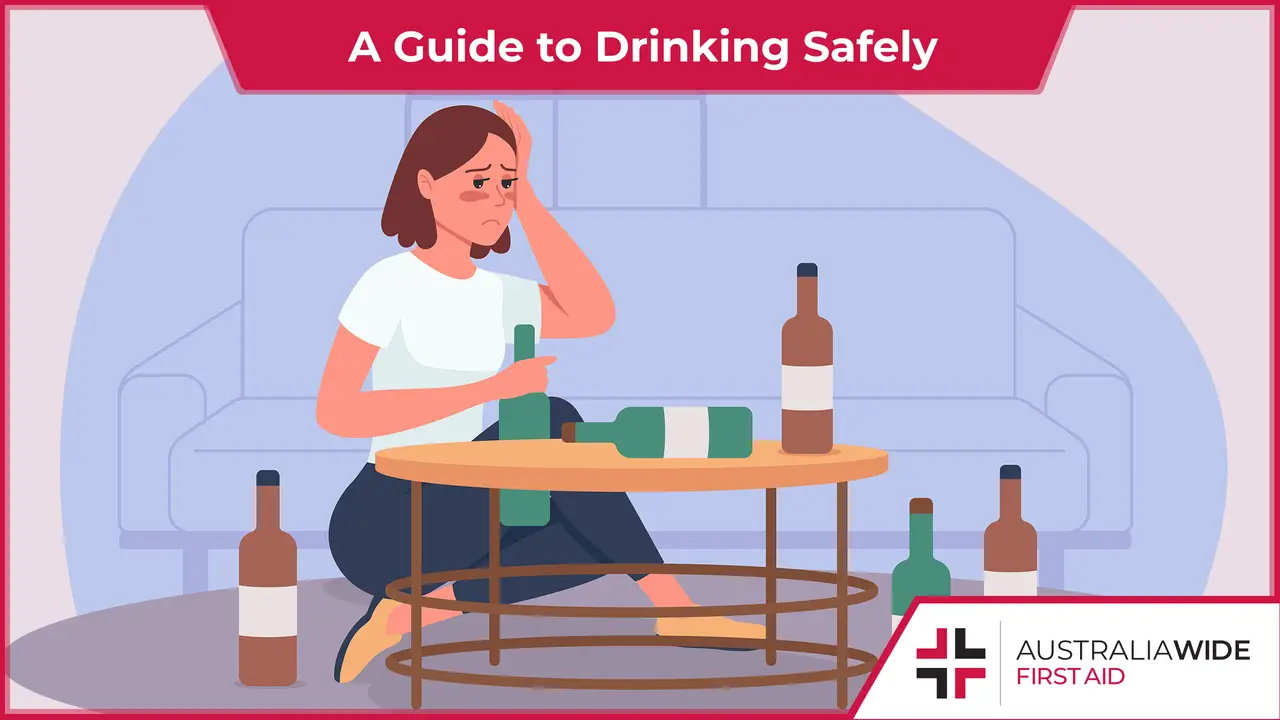How Alcohol Affects You: A Guide to Drinking Safely


We all enjoy taking a couple of glasses of wine or bottles of beer to unwind after a long day.
While consuming a moderate amount of alcohol is unlikely to cause any harm, excessive drinking can adversely affect you and even the people around you.
If you choose to drink alcohol, the effects it has on you depend mainly on how frequently you drink and the amount you take. Excessive drinking can affect your physical and mental health. Your drinking doesn’t affect you only; it also affects other people, such as your family, social circles or friends and the people around you. Therefore, you must consider drinking safely and responsibly for your sake and the people around you. If you would like to learn more about how alcohol affects you, how much drinking is too much and ways you can drink safely? Keep reading as we provide answers to all your questions.
Always remember that alcohol will affect you regardless of the amount you take. Drinking even a little alcohol can increase your risk of cancer. However, how alcohol affects you depends on how much you drink. Drinking too much can cause short and long-term effects.
Alcohol can affect a number of your body systems. Consumption of alcohol can affect your heart by raising your blood pressure, damaging your heart muscles and causing a stroke. Alcohol can affect your brain by causing brain damage, tremors, dementia, and nerve damage. Alcohol also affects your coordination, self-control, judgement, and reaction time; you’re likely to hurt the people around you because you’re not in control.
Alcohol can cause inflammation of the stomach and bleeding in the stomach. Alcohol has fatal effects on every organ in your body, including your liver, kidney, and pancreas. Women who take alcohol have been proven to be more at risk of breast cancer, infertility, and hormonal imbalance.
When you take alcohol, it passes into your body through your stomach’s wall and small intestine. It then travels through your blood to another part of your body, including the brain. When alcohol reaches your brain, it slows it down and affects almost every part of your body. Alcohol takes only a few minutes to get into a healthy average person’s brain.
The liver metabolises and breaks down the alcohol in your body in a two-step process. Alcohol is first broken down into a chemical called acetaldehyde by an enzyme and then broken down to acetic acid. The cells in the body then break the acetic acid down further into carbon dioxide and water, which are later eliminated from the body via urination and breathing.
As you drink, the alcohol level in your body increases. The level of alcohol in the blood is called Blood Alcohol Concentration (BAC). A BAC of 0.01 shows you have 0.01g of alcohol in 100ml of your blood.
In an average, healthy person, one standard drink, which is about 375ml of a (2.7%) mid-strength beer or about 100ml of 13.5% red wine, can increase BAC by about 0.02 and takes almost an hour to break down. But remember this varies in different people.
Your blood-alcohol concentration (BAC) is a sure guide for how your body is being affected, regardless of how often you drink. The best way to determine your BAC is through a breathalyser - a handy guide for how BAC readings impact you can be found here.
Alcohol impairment begins with your first drink. Alcohol impairment is related to the concentration of alcohol in the blood. Alcohol slows down the nervous system’s functions, which delays normal brain functions and makes an individual unable to function normally.
Alcohol intoxication is often a result of taking too much alcohol in the short term, which can be harmful and deadly. You can get intoxicated from taking any type of alcohol, including beer, wine, or liquor. Alcohol intoxication occurs when the liver cannot remove alcohol from the blood fast enough because the blood alcohol level is too high.
Mostly, you can’t reverse the effects of intoxication, but some things can be done to prevent things from getting worse. Suppose you suspect someone around you is intoxicated. In that case, you can perform first aid to stabilise the causality while waiting for an emergency. If you don’t know how to carry out the first aid on someone intoxicated, you can take one of our First Aid Courses to prevent and manage intoxication from getting more deadly.
The seven stages are:
Follow the following tips to drink safely:
Alcohol poisoning is a severe and deadly consequence of consuming large amounts of alcohol in a short period. Drinking too much can adversely affect your breathing, heart rate, body temperature, and gag reflex, possibly leading to a coma or death. Alcohol poisoning needs immediate medical help to prevent things from deteriorating further. Symptoms of alcohol poisoning are confusion, vomiting, seizures, slow breathing, pale skin, low body temperature, and unconsciousness.
The first aid for alcohol intoxication is often a dose of paracetamols or liver salts and slow re-hydration back to normal. Ensure the person doesn’t lie face up to prevent them from choking to death or suffocating on their vomit. Let the person lie on their side to encourage a clear airway in case they start vomiting. Check for and treat any visible external injuries before the medics arrive.
Knowing your limit will help you understand how to control your drinking and drink safely. When you’re drinking, keep track of many you have taken. Everyone has different alcohol limits, and this is because everybody processes alcohol differently because of factors such as age, weight, or gender. To understand your drinking limits, you need to know the recommended limits.
Moderate drinking is:

October 1, 2024
Almost every job involves using the body to carry out some type of manual task. Some tasks may be hazardous, causing injuries such as musculoskeletal disorders (MSDs). Knowing how to manage them is a legal responsibility of all workplaces.

January 10, 2024
In Australia, workplace safety is a top priority, and First Aid plays a crucial role in ensuring the well-being of employees. Workplaces are expected to adhere to specific regulations and guidelines outlined by Safe Work Australia. How does your workplace stack up?

November 24, 2023
No matter how experienced you are as an outdoor activity leader, there are some things you should always do to keep your group safe. Nature can be unpredictable, and so it’s best to be prepared.